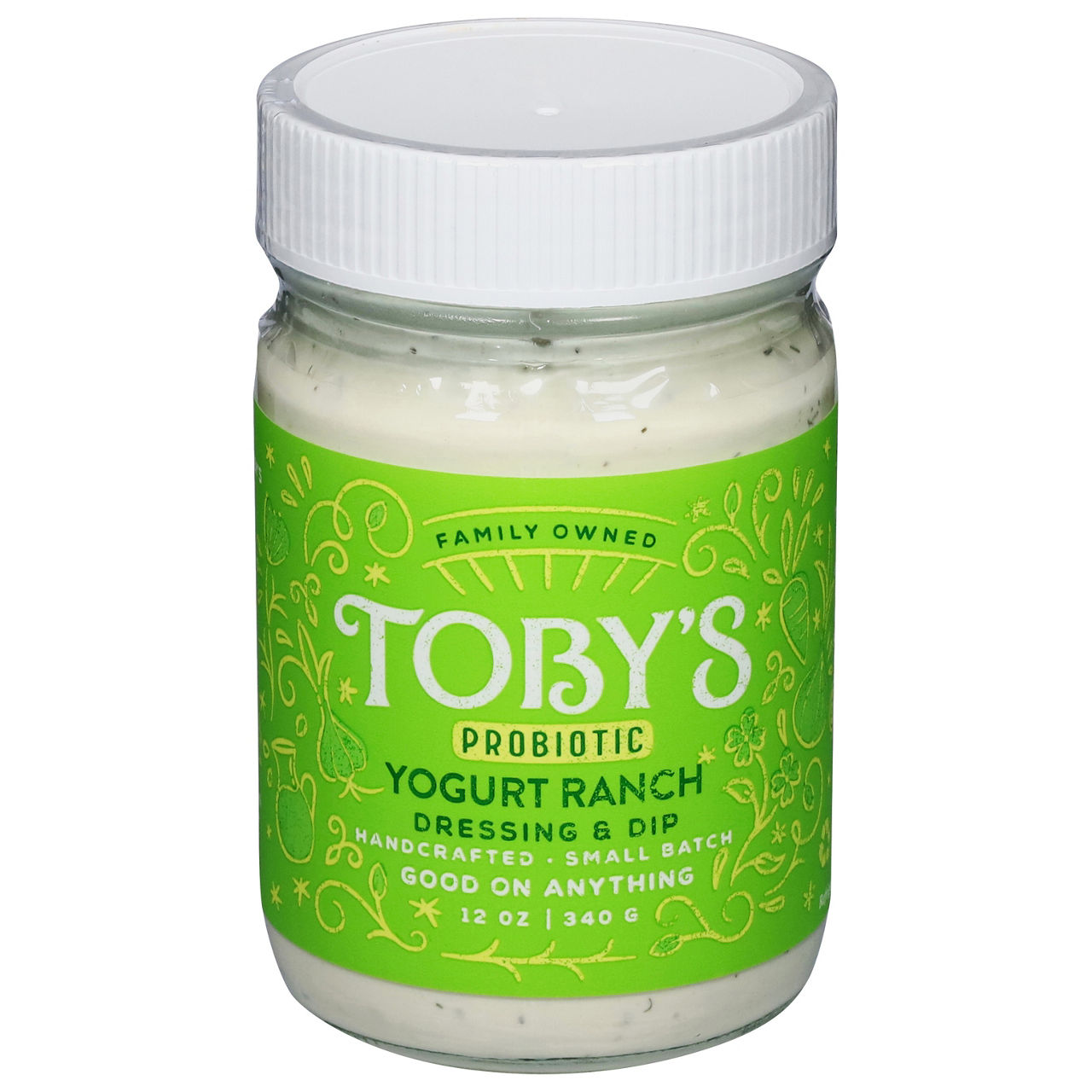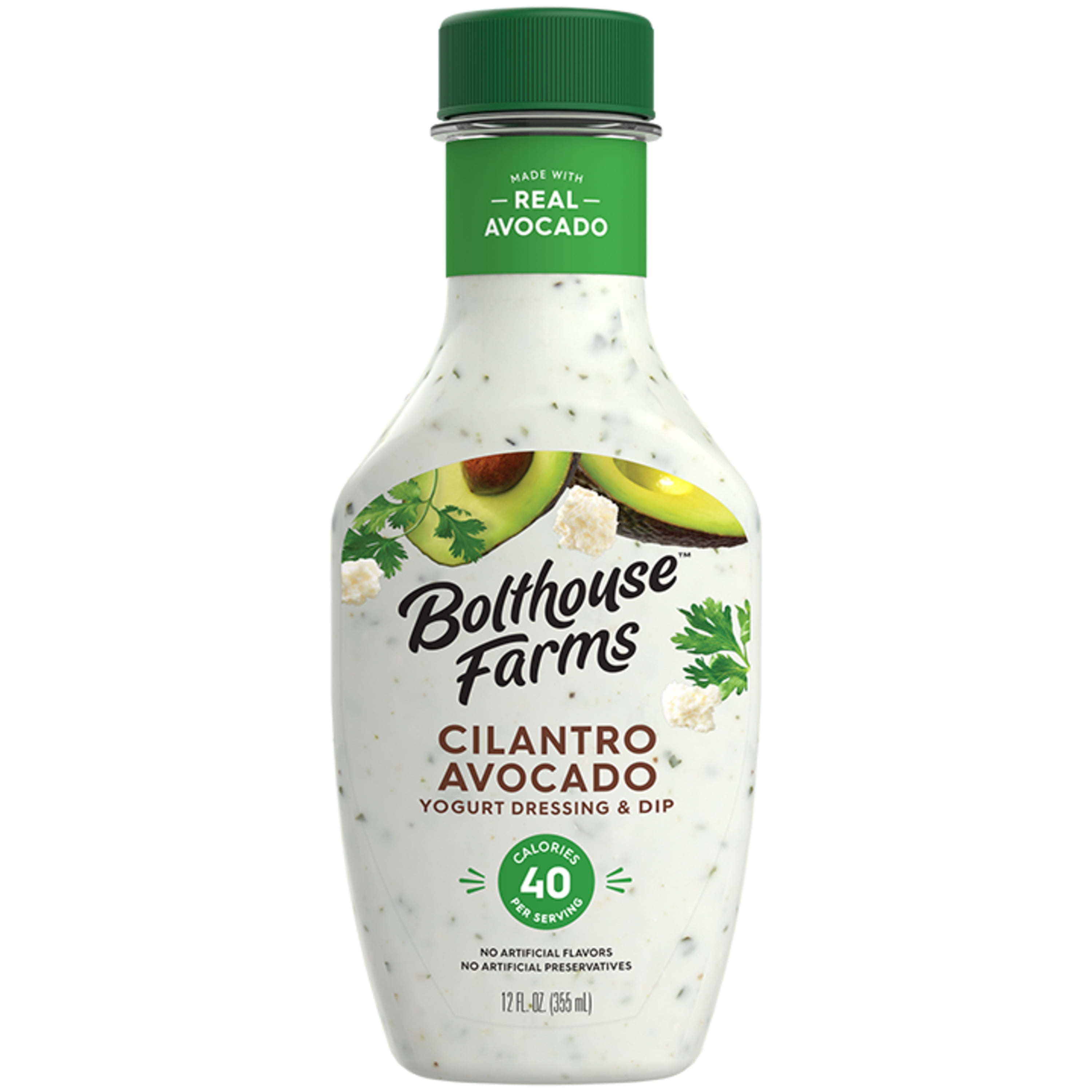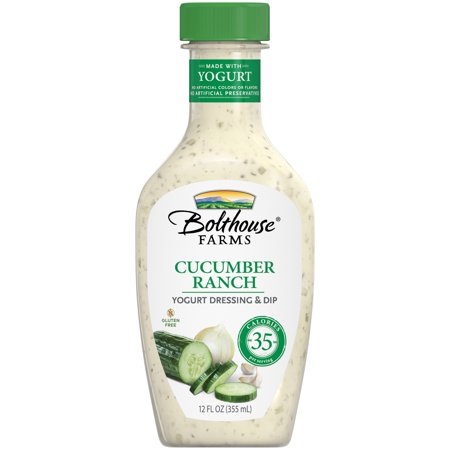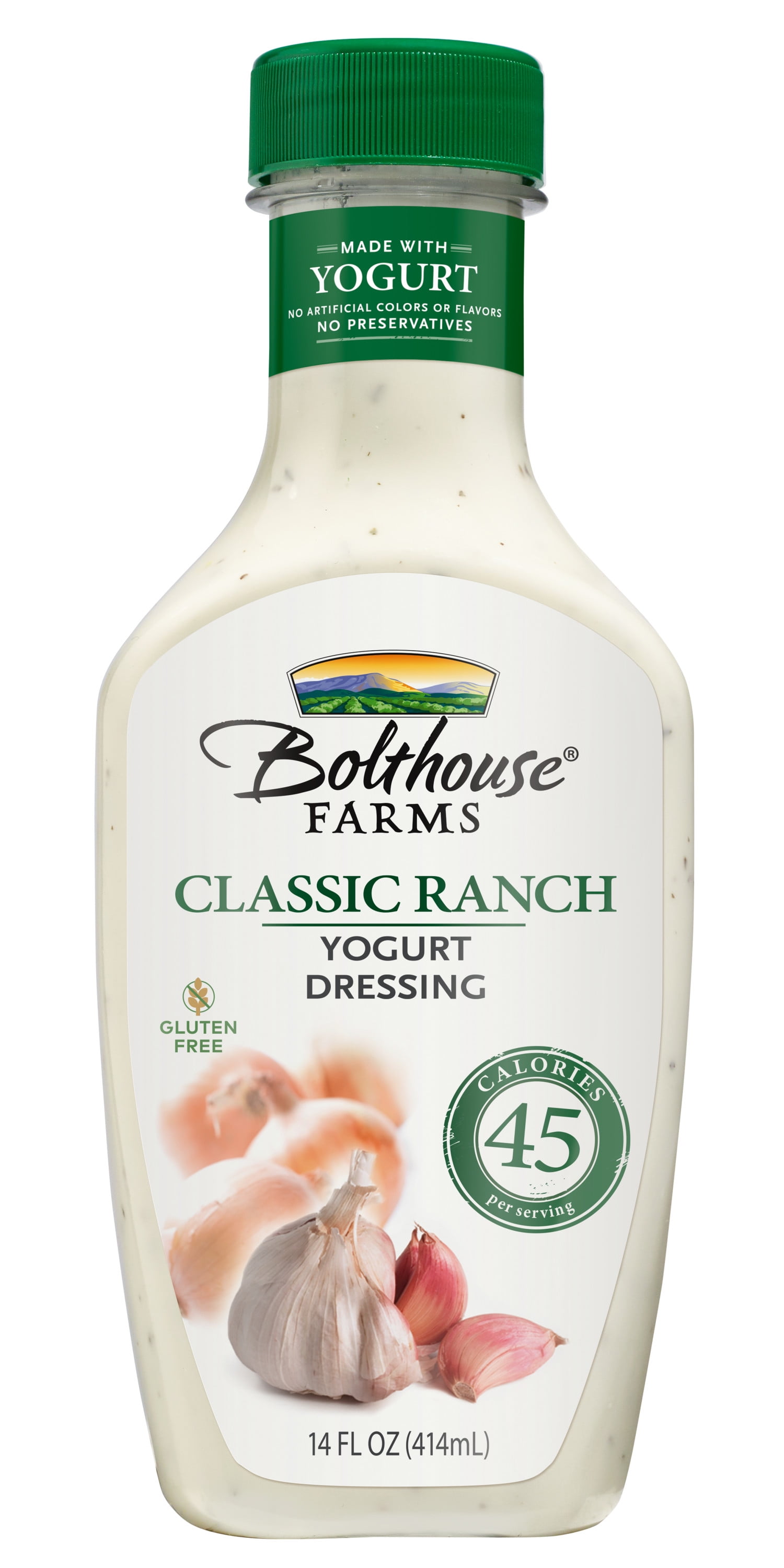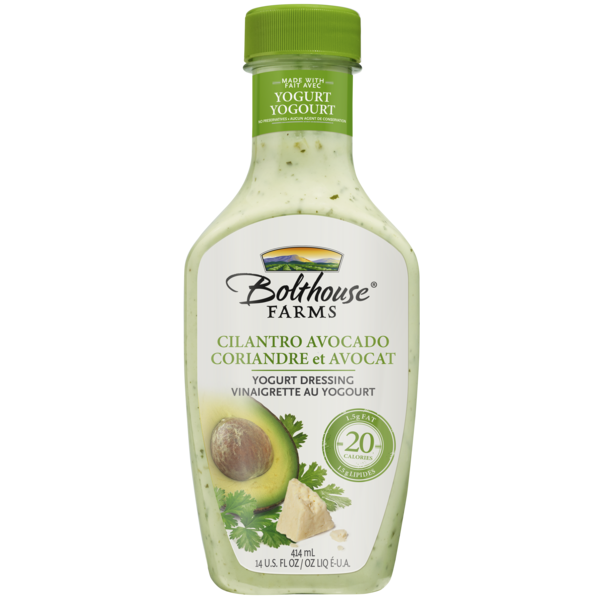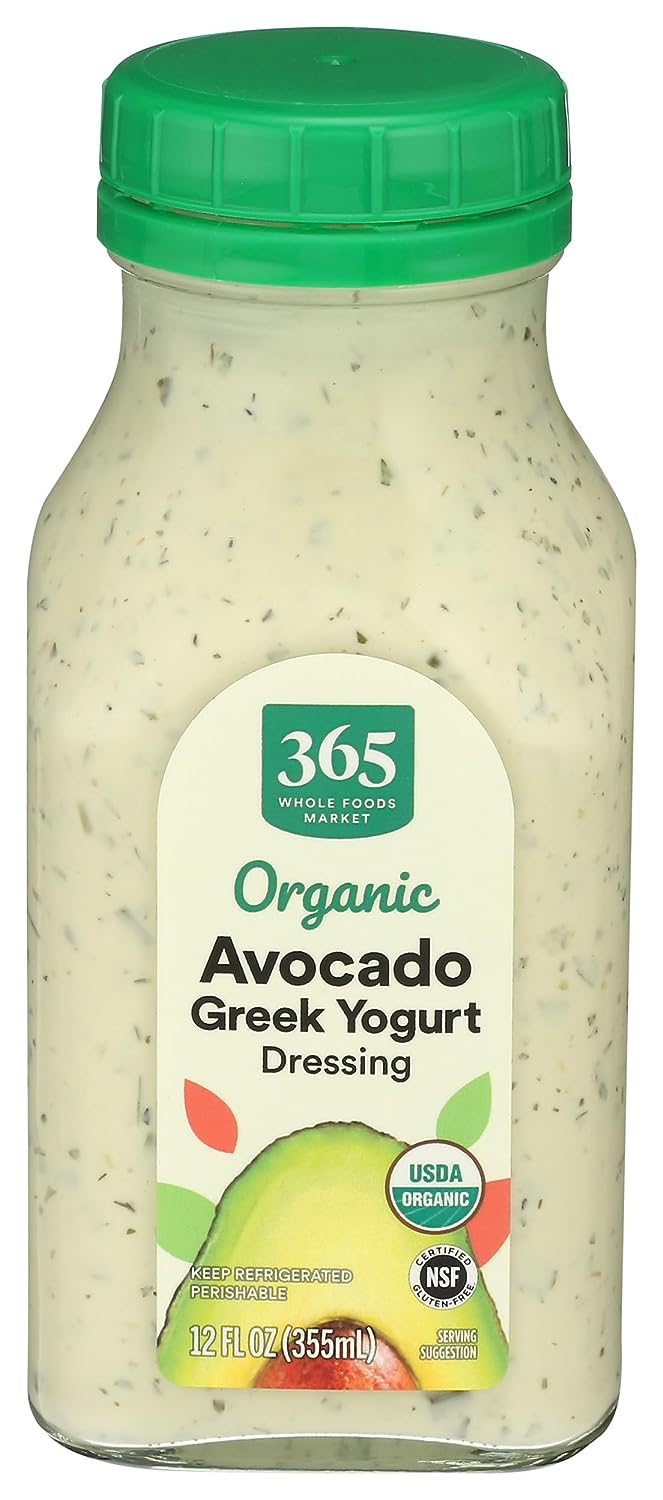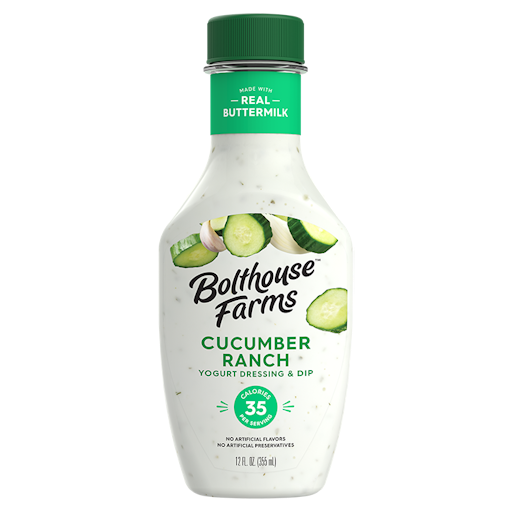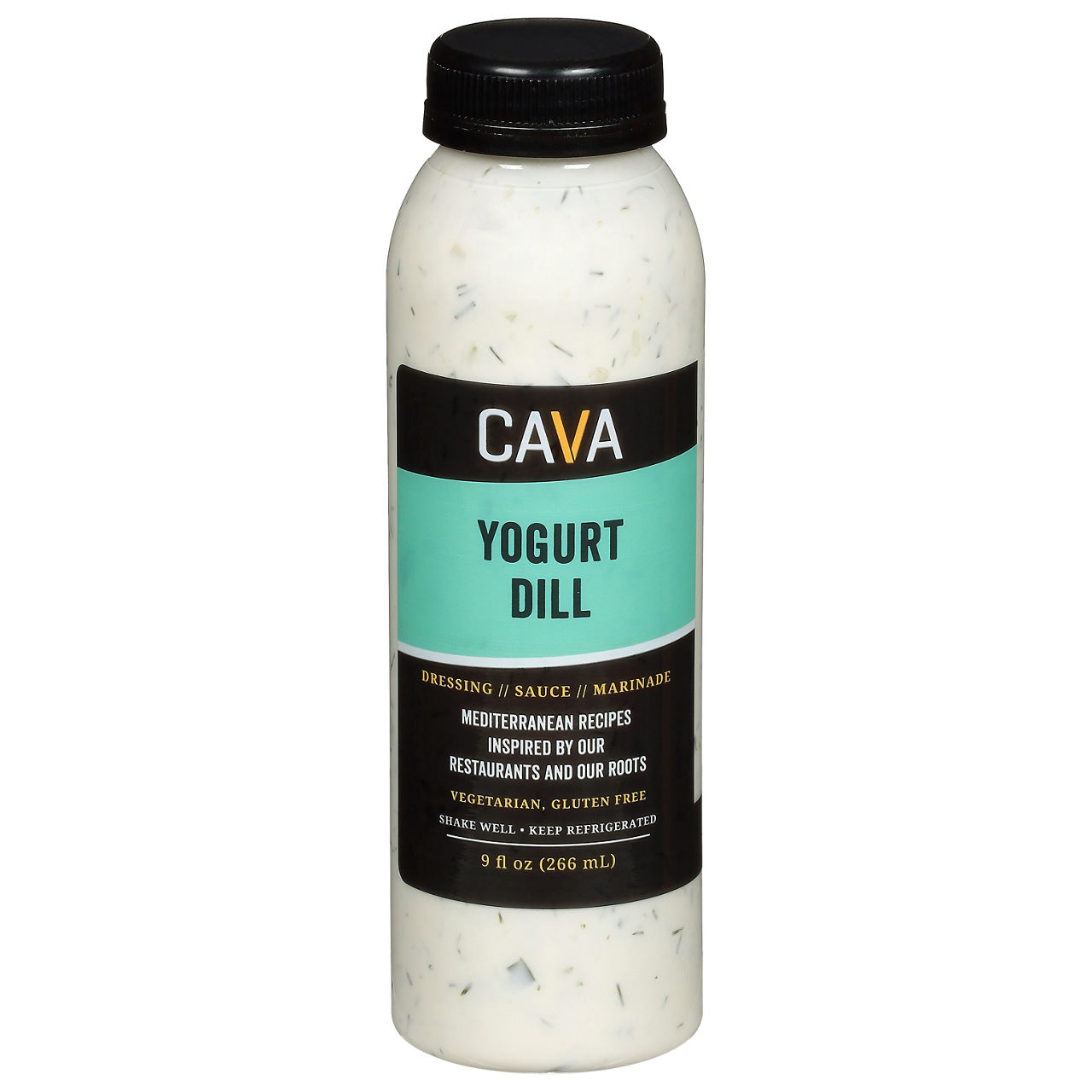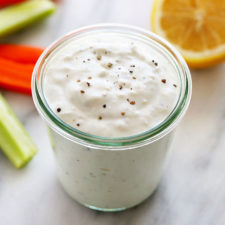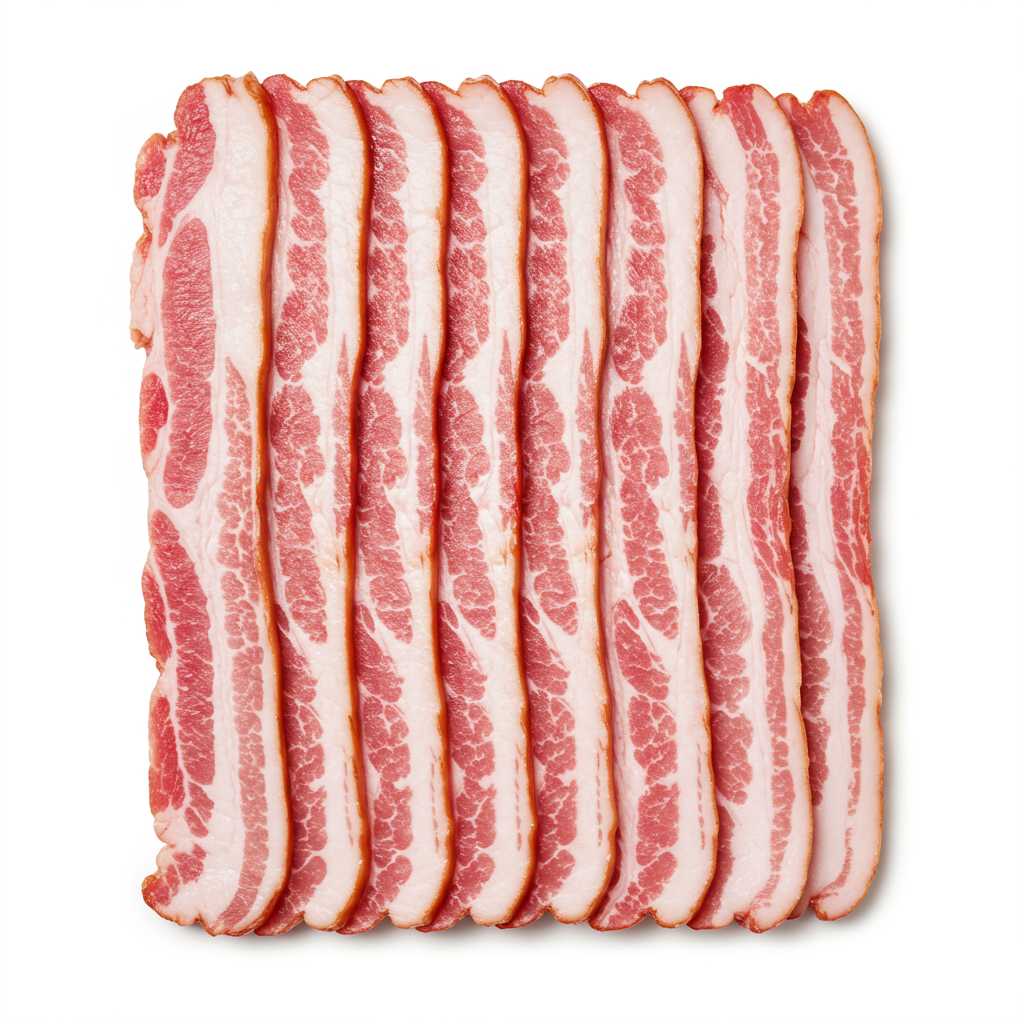Yogurt Dressing
Yogurt dressing is a versatile and creamy condiment that can elevate various dishes by adding a tangy and refreshing taste. A popular alternative to heavy, cream-based dressings, it is typically made by combining yogurt with a variety of herbs, spices, and other flavor enhancers. With its rich and smooth texture, it's perfect for drizzling over salads, as a dip for veggies, or even as a sauce for cooked meats and grains.
Being highly customizable, yogurt dressing allows home cooks to experiment with flavors and adjust it according to their taste preferences. By using different types of yogurt, such as Greek or regular yogurt, different thicknesses and creaminess can be achieved. Moreover, yogurt dressing provides the added benefit of being a healthier option, as it is generally low in fat and calories, while delivering probiotics for gut health.
53%
CARBS
37%
FAT
11%
PROTEIN
124 Yogurt Dressing Products
Toby's Dressing & Dip, Yogurt Ranch, Probiotic
Bolthouse Farms Dressing, Cilantro Avocado Creamy Yogurt Dressing
Bolthouse Farms Cucumber Ranch Yogurt Dressing
Bolthouse Farms Classic Ranch Yogurt Dressing
Bolthouse Farms Cilantro Avocado Yogurt Dressing
365 by Whole Foods Market, Dressing Greek Yogurt Avocado Cilantro Organic
Bolthouse Farms Cucumber Ranch
Bolthouse Farms® Cilantro Avocado Yogurt Dressing
Cava Yogurt Dill Dressing Sauce Marinade
Bolthouse Farms Dressing, Honey Mustard Creamy Yogurt Dressing
1 Recipe for Yogurt Dressing
Used In 1 Recipe
Yogurt Dressing Is Frequently Used With
Yogurt Dressing FAQ
Cooking with yogurt dressing often raises questions and concerns. Many cooks wonder about the right yogurt to base their dressing on, if it curdles when warm, why it sometimes separates, and how to use it effectively. One common issue beginners face is choosing the right type of yogurt. For instance, Greek yogurt, with its thicker consistency, is ideal for creamy and indulgent dressings, while regular yogurt brings a lighter texture. However, it can be challenging to keep the consistency smooth and even. The acidic nature of yogurt often leads to the dressing separating or curdling, especially when exposed to heat or mixed with oily ingredients. To prevent this, it's important to use room-temperature yogurt and add oil slowly, while constantly whisking.
Getting the most out of yogurt dressing means maximizing its versatility. Experiment with different herbs, spices, and flavorings like garlic, dill, mustards, and various vinegars. Your dressing can take a Greek twist with the addition of feta cheese, or an Indian route with curry spices. It's all about personalizing to your palate. Another tip is to use it judiciously. A little goes a long way, and you want your dish elements to shine through.
A lesser-known fact is that yogurt dressings, besides culinary use, have wellness applications too. For instance, they can be used as a nourishing hair and skin mask due to yogurt's probiotic and mild exfoliating properties.
Can I use any type of yogurt for the dressing?
Why is my yogurt dressing separating?
Can I heat my yogurt dressing?
What can I use instead of oil in yogurt dressing?
What herbs go best with yogurt dressing?
How can I make my yogurt dressing more flavorsome?
How can I make vegan yogurt dressing?
How can I thin out my yogurt dressing?
Can I use flavored yogurt for salad dressing?
What dishes go best with yogurt dressing?
Expiration & Storage Tips
When does yogurt dressing expire?
Unopened yogurt dressing, when stored in a cool and dry place, usually last 1-2 months past the printed date on the package. Once it's opened, it is best to consume it within 1-2 weeks for the best taste and quality. If homemade yogurt dressing is used, it should be used within 3-4 days. Also, note that frozen yogurt dressing should be used within 2-3 months of freezing.
How do you tell if yogurt dressing is bad?
The appearance of mold or an off smell is a definite sign that the yogurt dressing has spoiled. If the dressing develops an off-white-to-yellow color or has a lumpy texture, it's best not to consume it. Also, if it has been open for longer than recommended or has been stored in warm conditions, it may develop a sour or tangy aroma which is also an indication that it's no longer safe to eat.
Tips for storing yogurt dressing to extend shelf life
• Store in an airtight container to prevent moisture and bacteria from entering.
• Always keep in the refrigerator, ideally at a temperature between 35 and 40 degrees Fahrenheit.
• Do not leave the opened dressing out of the fridge for more than two hours to prevent bacteria growth.
• For extended storage, freezing is possible. Transfer the dressing into a freezer safe container leaving some space for expansion. When ready to use, thaw it in the fridge overnight and stir well before serving.
EXPIRES WITHIN
7 - 11
MONTHS
Substitutes
Health Info
Macros
4g
CARBS
3g
FAT
0g
PROTEIN
Allowed on these diets
LOW FAT
HIGH CALCIUM
VEGETARIAN
KETO
MEDITERRANEAN
LOW CARB
GLUTEN FREE
Contains these allergens
MILK

